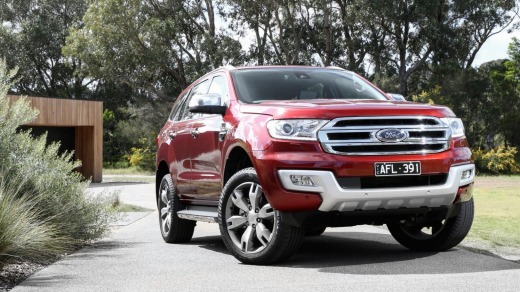
Some safety features are a legal requirement in Australia. All new passenger cars sold in Australia must have electronic stability control, for example, and it's uncommon for cars not to have safety features such as anti-lock brakes and front and side airbags.
Beyond these features, there is a rapidly evolving catalogue of driver assistance equipment, which can help prevent crashes from happening (or at least make them less serious). Let's look at how they work.
1. Automatic Emergency Braking (AEB)
There are almost as many takes on the way AEB technology is deployed as there are car brands, however every system fulfils a similar role: to prompt the driver via an audible and/or visual warning to take necessary braking action to avoid a collision, and to apply the brakes if the driver fails to react. Systems are also split into low- and high-speed. Low-speed systems, such as Ford's Emergency Brake Assist, are more common, as are the kinds of crashes they help prevent: nose-to-tail collisions in urban conditions. These systems usually operate up to about 30km/h. Automatic emergency braking systems also differ in the level of braking assistance they can offer. The best systems, usually found on more expensive cars, function up to highway speeds of 100km/h and can quickly brake the car to a stop.

2. Forward Collision Alert
This kind of system is a take on the emergency braking system described above, but with the focus on warning the driver of the possibility of an impending collision, and assisting to deploy the brakes to the maximum. In the Ford Everest Trend and Titanium models, a forward collision alert features alongside the automatic emergency braking system. The system gives the driver an indication via a brake light warning on the windscreen and an alarm that is sounded to warn the driver that the car is rapidly approaching a vehicle travelling in the same direction ahead. If the driver doesn't react, the system pre-charges the brakes in readiness for responsive braking. When the driver touches the pedal, the hardest possible braking force is automatically applied.
3. Driver-Assist System with Pedestrian Detection
Pre-collision assist systems, often with a specific pedestrian detection feature, can detect people in the road ahead, or off to the sides and automatically apply the brakes if the driver does not respond to visual and audible warnings. These systems are available on the Ford Mondeo Trend and Titanium models and typically use video inputs to identify the shape and movement of pedestrians, in addition to the long-range radar and laser sensors used in AEB systems.
And two more smart technologies you would be glad to have:

Curve Control
This system checks 100 times each second that the vehicle is turning a corner as the driver intends. If the vehicle isn't turning enough, because it is travelling too fast for the bend, the system reduces engine power and applies 'smart' four-wheel braking. Ford says its system can reduce vehicle speed by about 15km/h in one second, greatly increasing the driver's ability to keep the vehicle on its intended path.
Inflatable Seat Belts
Ford's inflatable rear seatbelt, which is standard in the Mondeo sedan and wagon, combines the qualities of the airbag and the seatbelt in a feature designed to reduce head, neck and chest injuries. The belts, which feel like more comfortable, padded versions of normal seatbelts, can inflate in a fraction of a second in a crash to disperse the restraining force over an area five times greater than that of a conventional seatbelt.
This article is sponsored by Ford Australia.















